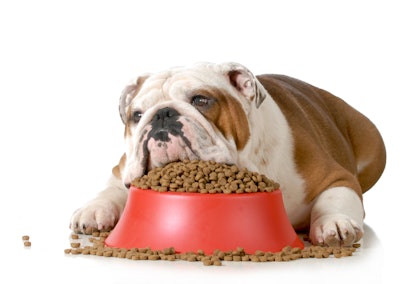
According to Dr. Gary Richter, a veterinarian and pet wellness expert, recent data indicates that over 59% of dogs and 61% of cats in the U.S. are overweight or obese, creating significant health challenges for pets and their families.
As appetite suppressants (i.e., the 'Ozempic for dogs') are being currently tested, veterinary nutrition experts emphasize that sustainable solutions require focusing on fundamental feeding practices rather than drugs or implants.
Dr. Richter explains how pet food professionals can lead the way in addressing this growing health concern through better products, clearer guidance and owner education.
Q&A: How pet food companies can tackle the obesity challenge
How does pet obesity compare to human weight issues, and what makes it easier to solve for pets?
"Pet obesity mirrors human obesity in many ways — we see the same physical complications including joint injuries, arthritis, chronic inflammation, back pain, diabetes in cats, and an overall decrease in quality and quantity of life," Dr. Gary Richter explains. "But there's a crucial difference: obesity in animals is very easy to avoid and resolve. Unlike humans who battle urges and willpower issues, our pets are 100% dependent on us for their food. As caretakers, we have complete control to optimize their weight and nutrition."
With the exception of medical conditions like hypothyroidism, Dr. Richter notes that obesity is almost always a function of pets receiving too much food or the wrong food.
How can pet food manufacturers help when it comes pet obesity?
"Honestly, there's no need for weight management supplements for pets," says Dr. Richter. "There's no willpower issue with pets — it's all on us to choose the right food and feed the right amount. Education of pet owners is the key to managing obesity in pets."
Feeding guidelines on products are an approximation at best, notes Dr. Richter. "The amount of calories an animal needs depends on far more than ideal body weight — age, breed, metabolism, medical conditions and exercise all play a role," he says.
His recommendation for pet owners is straightforward: "Feed pets the nutritional profile they're evolutionarily designed to thrive on — [a diet] largely composed of protein and fat with relatively fewer carbohydrates.
"Monitor them for a month or two," he adds. "If they're getting fat, feed them less. If they're getting thin, feed them more."
Dr. Richter said the message is clear: the solution to pet obesity lies not in appetite suppressants or complex formulations, but in returning to nutritionally appropriate pet food with proper portion education for pet parents.
















